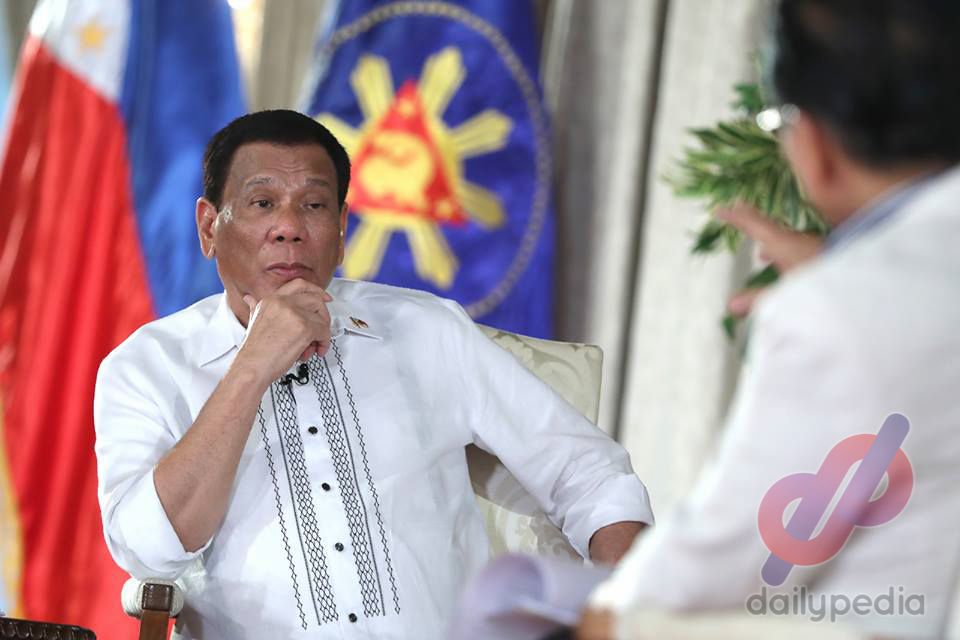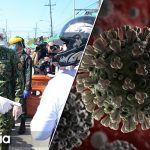President Rodrigo Duterte is now considering a shift to a more relaxed quarantine as daily cases of COVID-19 reached numbers as high as back in 2020.

In a speech last March 11, Duterte said he is giving himself and the Inter-Agency Task Force on the management of Emerging Infectious Diseases (IATF) a mere two weeks to study how the country can transition to a more relaxed modified general community quarantine.
Presidential Spokesperson Harry Roque says they are looking to further open the economy by April after Pres. Rodrigo Duterte said he gave a timetable of "just weeks." pic.twitter.com/ssuuCMS6Rk
— ONE News PH (@onenewsph) March 12, 2021
“We cannot forever be in the strict protocols because we have to open the economy,” Duterte said, adding that Filipinos have been complaining of hunger from not being able to work.
This might be a call-back to acting Secretary for Socio-economic Planning Karl Kendric Chua’s proposal to open up the economy back in February, a proposal that was thumbed down by Duterte in the same month.
Presidential spokesperson Harry Roque also assured netizens that Duterte will decide within two weeks if the economy will indeed be re-opened.
President Rodrigo Duterte is expected to decide on reopening the economy through easing quarantine restrictions by April, Presidential spokesperson Harry Roque said Friday.https://t.co/VFsnO1Ge5G
— GMA Integrated News (@gmanews) March 12, 2021
Roque, however, clarified that the president is in a “quandary” since he is looking at two more factors outside of Filipinos complaining about hunger more than COVID-19 solutions: rising COVID-19 cases per day and the lack of vaccines for a wide-scale rollout.
Roque is optimistic about the president deciding to open the economy by April as the government monitors the country’s two-week attack rate, daily attack rate, and how much of our health care system is being utilized.
This decision, however, raises questions about both the government’s priorities and how they are handling the pandemic more than a year since the world first recorded cases of COVID-19.
Recent data from the Department of Health suggests that opening the economy would likely bring the country back to a stricter enhanced community quarantine, with the latest case count nearing the 4,600 mark.
Wow!!! 4,700 plus cases today and you have the guts to ease quarantine restrictions? https://t.co/PcOFzNyqls
— Ethan Rufino (@iamethanrufino) March 12, 2021
https://twitter.com/mikeelim_/status/1370320604000182272
This has prompted some institutions and local governments to once again impose strict quarantine protocols less than two weeks after the arrival of COVID-19 vaccines.
The University of the Philippines-Diliman (UPD) will close all of its public spaces every weekend starting today, March 12, in light of the recent spike in the number of COVID-19 cases. | @philstarlife
READ: https://t.co/CEQ9P5Bdm6 pic.twitter.com/EWFh1c4lTz
— The Philippine Star (@PhilippineStar) March 12, 2021
The University of the Philippines – Diliman will be closing off its public spaces from Friday, 4 pm to Sunday evening to try and curb the spread of COVID-19 within the campus.
Tagaytay imposes curfew, tighter safety measures amid new COVID-19 cases https://t.co/WFpMgF0p1S
— Rappler (@rapplerdotcom) March 12, 2021
Tagatay is looking at imposing stricter health protocols for its visitors, thought they are still willing to accept evacuees from Taal Volcano’s danger zone after it has its alert status raised to level 3.
Other steps taken by the national government to help prevent the spread of COVID-19 in time for a reopening included increased police and military presence on the streets.
The Department of Health is already working to speed up COVID-19 vaccination.
The Department of Health (DOH) is working to speed up COVID-19 vaccination, Health Undersecretary Maria Rosario Vergeire said Friday after Senator Panfilo Lacson urged the government to accelerate the rollout. https://t.co/5ZPKjLOSBG
— GMA Integrated News (@gmanews) March 12, 2021
This comes after Sen. Panfilo Lacson said current estimates places the country getting herd immunity from COVID-19 by 2033.
Herd immunity is when 60 to 70 percent of the population has been vaccinated, halting the spread of the disease enough to render the entire population immune.
Should all of this be accomplished, will Duterte agree to opening up the economy by April? That remains to be seen.


